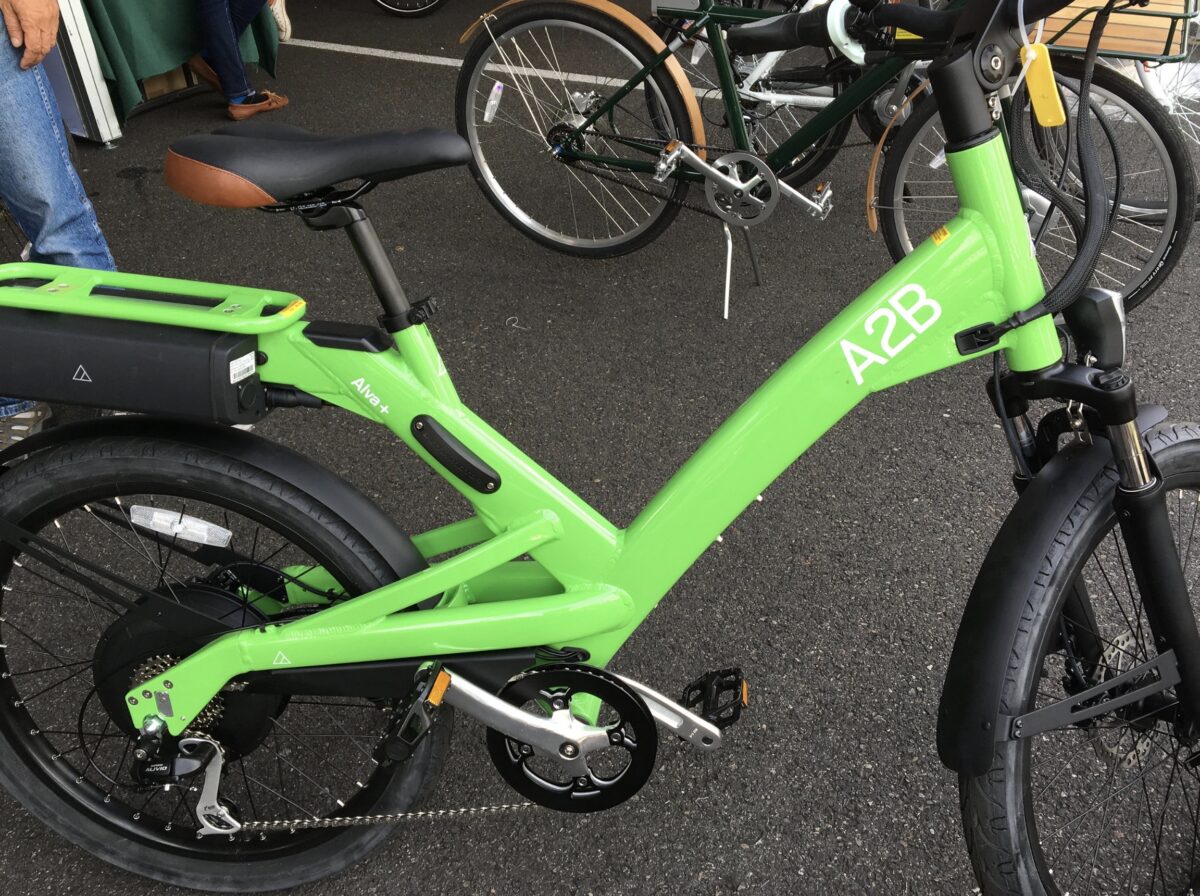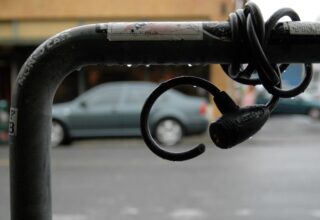



The era of the electric bike is upon us, and as I’ve written about for BikePortland before, I’m one of the people jumping aboard the e-bike boom.
I wrote about some of the questions I had, a lot of which surrounded the logistics of buying an electric bike: Which one should I get? What should I be looking for in my perfect e-bike? How can I make sure I don’t get my precious, expensive new bike stolen?
It turns out many others had similar questions (the comment thread here is full of them), and I was also pleased to hear from some experts who kindly offered input to help get them answered.
Before I share some of the questions and offer a few answers, I want to point out how lucky we are in Portland to have many great e-bike specific shops that are full of smart staff that would love to help you. Some of our favorites are Cynergy E-Bikes, The eBike Store, Vvolt (local manufacturer/brand), and Splendid Cycles.
With that being said, here are a few basic questions that many people who responded to my article wanted more information about before they go all-in on an electric bike:
Should I get an e-bike with a throttle?
Not all e-bikes are created equal as far as how the “e” part operates. Some bikes, like the Nike Biketown ones that you can rent on the streets in Portland, are relatively low-speed pedal-assist, meaning your pedaling provides a motor output that gives a boost to your ride. (This is also known as a “class 1” e-bike.)
You can usually change the settings on your assist level depending on what you need, but you aren’t using a separate lever to trigger the motor, so riding one of these will feel pretty similar to riding a regular bike. A bike with just a pedal-assist would be good for someone who is pretty happy riding their non-electric bike but knows that the extra boost of power would help them use their bike more often. These bikes also hold power for longer because you’re helping the motor out by pedaling.
Other e-bikes offer both a throttle and pedal-assist for riders to choose between. With a throttle, riders can push a lever to get a quick boost of power that’s stronger than what you’d get if you were just pedaling, but for someone who wants the ability to choose between the tamer pedal-assist and the stronger throttle mode to, say, fly up steep hills with no effort or get an easy start from being stopped, this might be the right bike for you.
Bikes with and without a throttle are both considered bicycles under the Oregon E-Bike Rights Guide, as long as the motor can’t propel the bike to go more than 20 miles per hour.
Advertisement
How can I avoid getting my bike stolen?

This is something I have personally worried about, and it’s given me a bit of pause while considering whether or not I should get an e-bike.
The Portland Police Bureau’s Bike Theft Task Force isn’t what it used to be, and bike theft is still a big problem here. One thing you should always do is keep photos and the serial number of your bike handy in case you do have to report a theft. Without those on hand, it’ll be a lot harder to locate your bike.
But it would be better to not get your bike stolen in the first place, so let’s talk prevention. All the same rules apply to analog bikes, but are heightened given the higher cost of most e-bikes.
First, and maybe most important, is to pay attention to the location of where you leave your bike.
You should park your bike in a well-lit area, and in a place where people are going to notice someone taking a bolt cutter to your u-lock. Eva Frazier, the co-owner of Portland bike shop Clever Cycles, tells me people shouldn’t rest on their laurels when it comes to ‘secure’ bike storage areas, either. BikePortland has written about examples of theft taking place in these ‘secure’ facilities — so if you park your bike in a room with a bunch of other nice bikes, at your apartment or at work, you should maintain vigilance.
“I wish we had better security on the bike manufacturer’s side.”
— Eva Frazier, Clever Cycles
You have to have a U-lock. They are are unfortunately much more expensive than cable locks, but also a lot more difficult to cut through. BikePortland’s Josh Ross recently recommended the Hiplock D1000, which is still only available for pre-order. This lock is projected to cost an astounding $345, but if you have an e-bike that cost thousands of dollars, it might be worth it for the peace of mind. (There are also less expensive ones that still come highly recommended.) It’s also worth keeping in mind that many e-bikes have non-standard frame shapes and/or wider frame tube diameters — both of which make them harder to lock up with standard U-locks.
Frazier says there are new deterrence methods coming up every day, like alarms and insurance (which I will address later). But she thinks bike manufacturers should do more when it comes to theft.
Don’t let the fear of getting your e-bike stolen keep you tied to shelling out to fill up your gas tank.
“Theft is one of the most important issues to people,” Frazier says. “I wish we had better security on the bike manufacturer’s side.”
Some manufacturers are working to improve security — VanMoof, for example, includes a tracking device in its e-bikes. This is a luxury addition, though, so you might think about attaching another hidden tracking device to the bike, although that isn’t a perfect long-term solution.
And when it comes to all the fears that e-bikes drum up, it’s important to think about the alternative. If the choice is between commuting by e-bike or car, doesn’t driving offer a lot of the same risks? On a very helpful Twitter thread that compiled a lot of expert tips, economist Sarah Dougherty pointed out the cost/benefit analysis of traveling via e-bike versus a car.
“As I’m usually not leaving it for longer than I am in a store, [I] use regular lock and think of how much money I’m saving by not driving. I figure I save at least $2 for every 10 miles I don’t drive. At 1.5k miles already, risk of theft is possible money lost. Driving is certain money lost,” Dougherty writes.
This is a great point! Don’t let the fear of getting your e-bike stolen keep you tied to shelling out to fill up your gas tank.
Advertisement
Can I buy insurance for my electric bike?
We’ve covered bike insurance before at BikePortland, but it’s important to talk about it more, especially as it relates specifically to electric bikes. This is another layer that might give owners some peace of mind against theft, as well as injury or damage. Unlike car insurance, e-bike riders aren’t required to have insurance, but it’s a good idea anyway.
Renters or homeowners insurance often covers bikes, but because e-bikes have motors, it may be more difficult to get your bike covered under your regular home insurance, even though class 1, 2 and 3 e-bikes are legally classified as bikes under federal law. One BikePortland reader said they were quoted for motorcycle insurance when trying to insure their e-bike, which shouldn’t be the case for any e-bike that has a max speed of 28 miles per hour or less — insurers may simply be unfamiliar with this relatively new field.
E-bike specific insurance would grant you some financial protection in case of injury and collisions with other riders or vehicles. I found a few different options from places like Markel Insurance and Velosurance.
This is something you’ll want to ask an expert about when buying your bike. When I asked for a quote from Velosurance for a $2,500 e-bike, they said I’d be paying about $15 a month. Compared to the $100 I have been spending on car insurance monthly, this will be a very welcome trade.
I hope this was helpful to you! Stay tuned for more stories as I continue on my e-bike buying journey.


